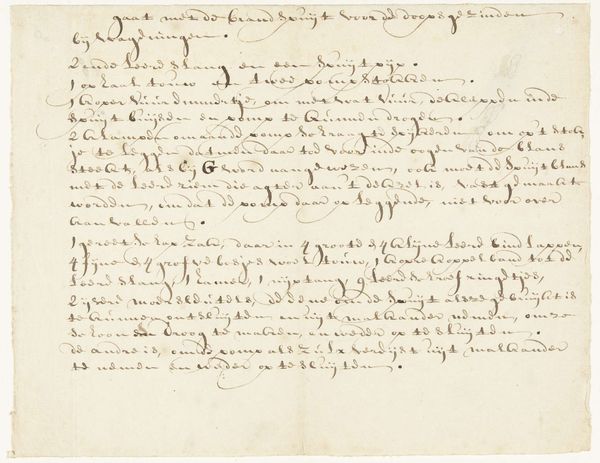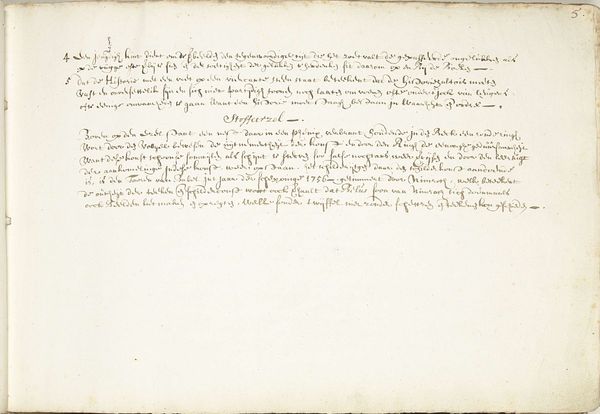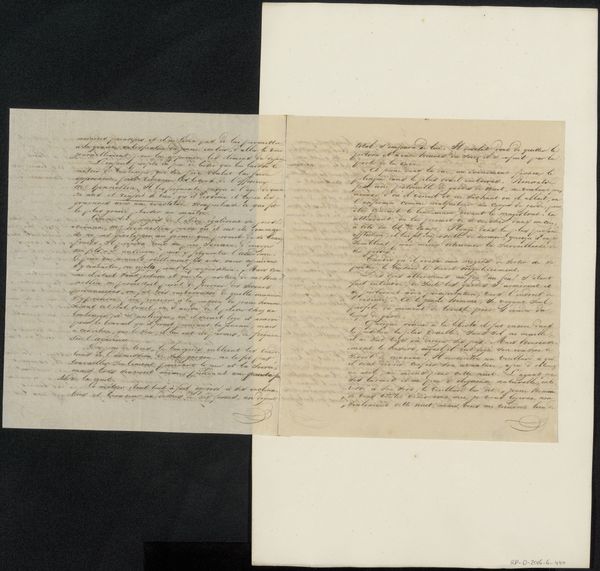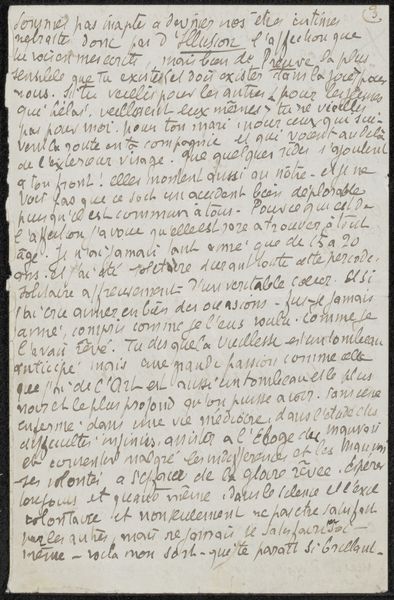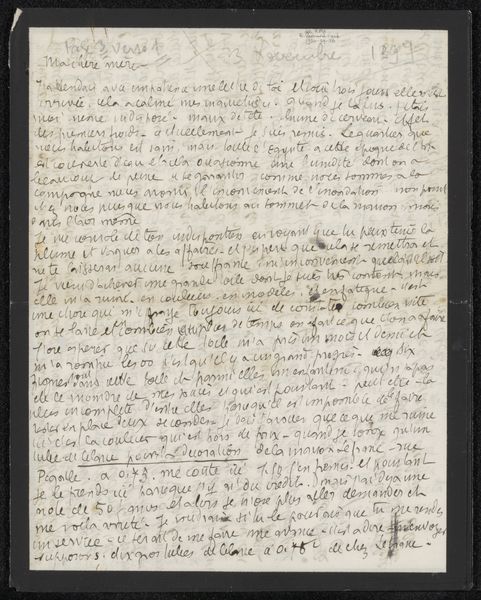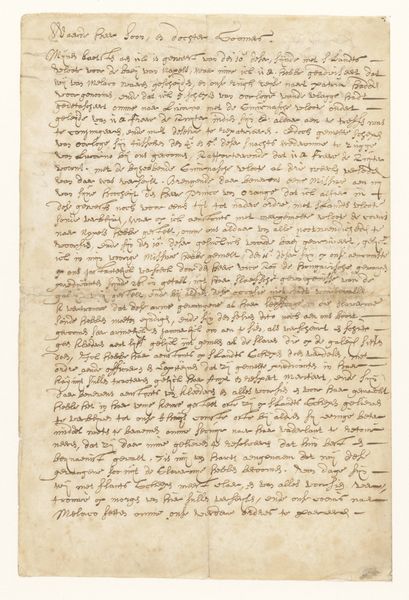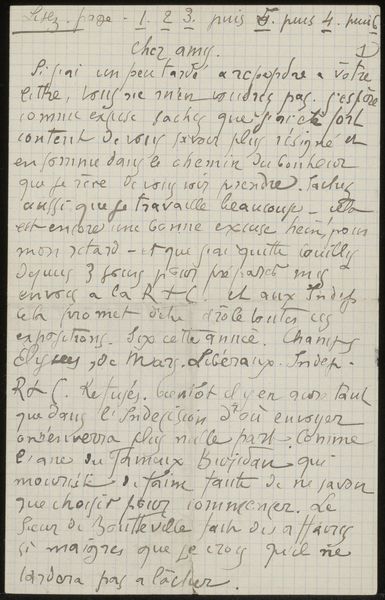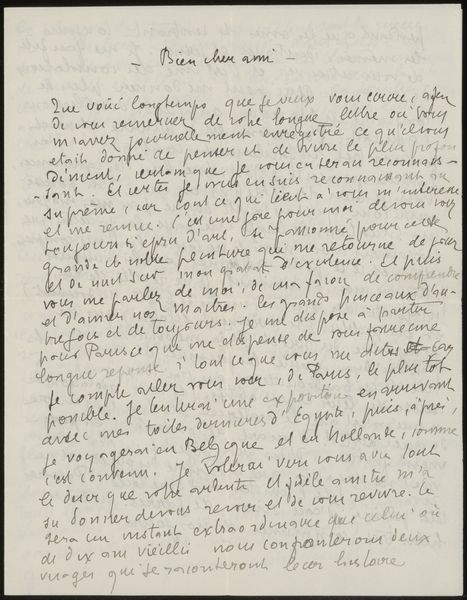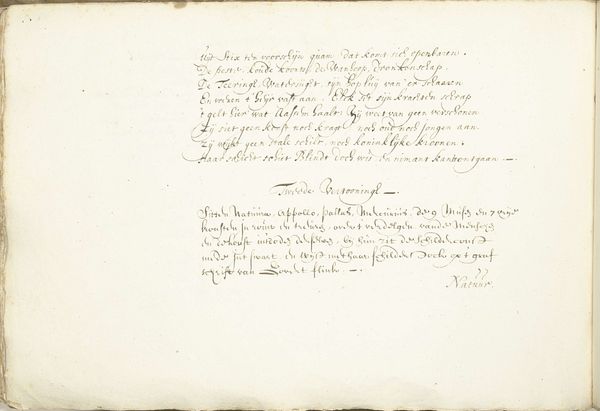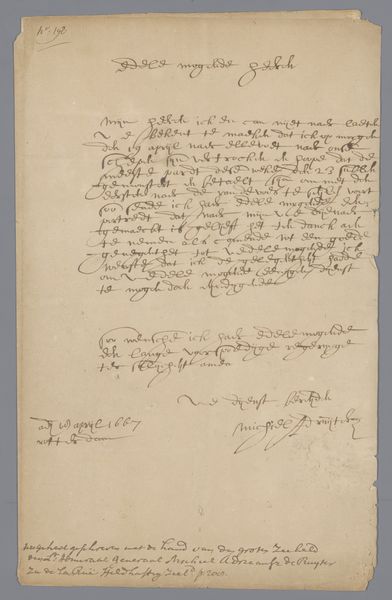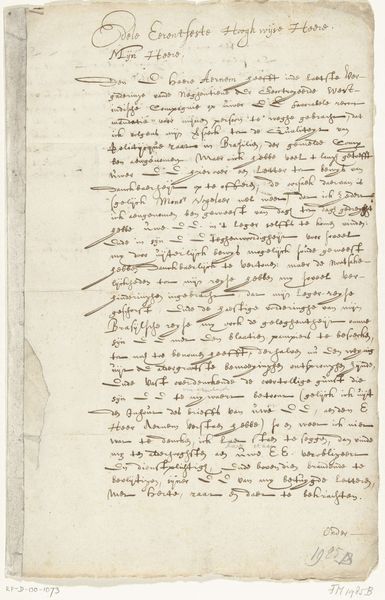
Briefje van Cabeljau en andere Alkmaarders aan de prins van Oranje met verzoek om hulp, 1573 1873
0:00
0:00
drawing, paper, ink
#
drawing
#
amateur sketch
#
thin stroke sketch
#
narrative-art
#
hand drawn type
#
hand lettering
#
paper
#
personal sketchbook
#
ink
#
fading type
#
geometric
#
sketchbook drawing
#
history-painting
#
sketchbook art
#
calligraphy
#
small lettering
#
initial sketch
Dimensions: height 40 mm, width 205 mm
Copyright: Rijks Museum: Open Domain
Editor: This intriguing 1873 drawing, made with ink on paper by J. de Haas, is titled 'Briefje van Cabeljau en andere Alkmaarders aan de prins van Oranje met verzoek om hulp, 1573'. It seems to depict some kind of historical document. The script is beautiful but challenging to decipher. What can you tell me about its historical context? Curator: This drawing alludes to a pivotal moment during the Eighty Years' War, specifically the siege of Alkmaar in 1573. The "letter" would have been a desperate plea from the citizens of Alkmaar, including those self-identifying as "Cabeljau" - historically associated with pro-Holland factions, asking Prince William of Orange for assistance against the Spanish forces. Haas’ 1873 re-imagining comes at a time of nation-building fervor in the Netherlands. What message was this late 19th century photograph meant to convey by looking back at that historic time? Editor: So it’s a historical reproduction meant to bolster Dutch national pride during that period. I imagine there must have been renewed interest in national heroes and significant events. It feels almost like propaganda, using history to build identity. Curator: Exactly. And look closely – the deliberate "sketchy" style contributes. It’s not necessarily striving for historical accuracy in detail, but evokes authenticity by suggesting immediacy, as if this was drawn closer to the actual event. It invites the viewer to feel a direct connection to their nation's founding story, legitimizing national unity. Editor: It’s fascinating how the medium and style choices influence the artwork’s reception. Are the geometric shapes visible in the sketch relevant too? Curator: Likely organizational aids, reminders of structure for an elaborate composition. They underscore the artifice of this constructed history. Are we meant to believe in its truthfulness, or admire the artist for cleverly reminding us of an ideological agenda? Editor: It is really thought provoking, that an amateur sketch could tell us so much more. Thanks so much for sharing your insight! Curator: My pleasure. It reminds us that even seemingly simple historical representations are laden with socio-political meanings, shaped by the time of their creation.
Comments
No comments
Be the first to comment and join the conversation on the ultimate creative platform.
